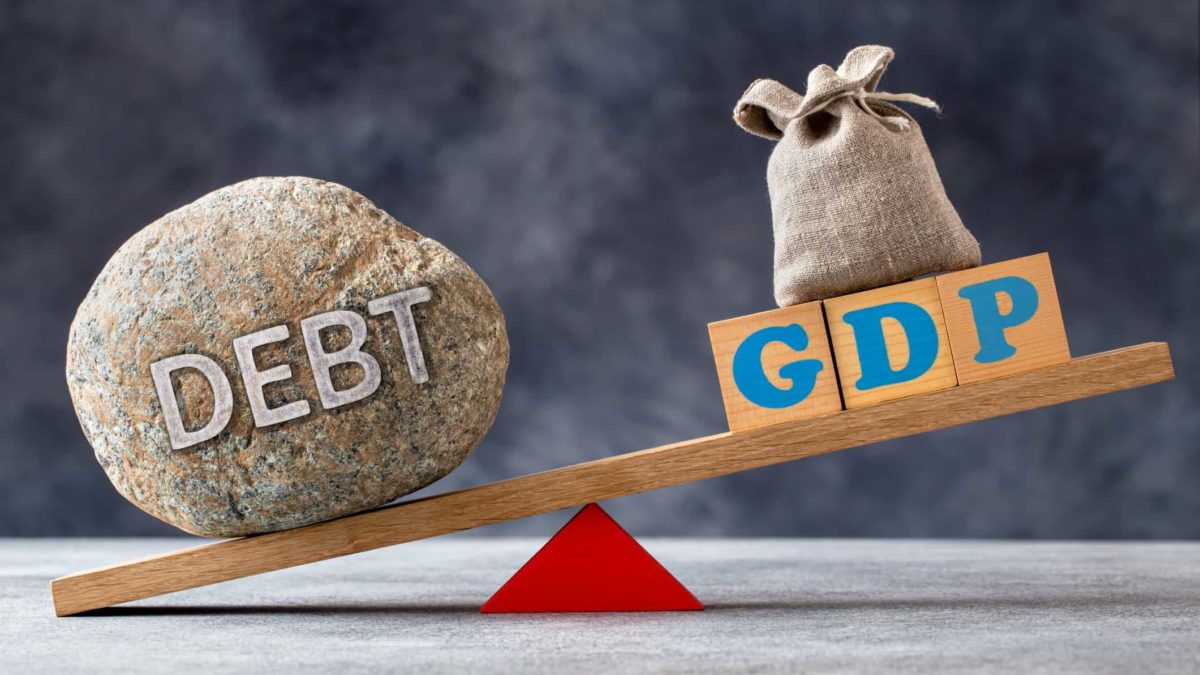What is GDP?
Gross domestic product, or GDP, is a measurement of economic output. It's the total value of all the finished goods and services produced within a country, region, or industry during a specified time, usually a year or a quarter. GDP helps measure economic health and growth.
A simple way to define gross domestic product is to break down the three words making up the term:
- Gross is the total market value of how much goods and services cost in the marketplace.
- Domestic refers to the country or home of the economic output.
- Products are the goods (things made) and services (actions provided) purchased by end-users.
Put together, GDP is the total market value of all the goods and services produced within a country's borders during a year.
Calculating GDP
Economists calculate GDP using four inputs:
- Personal consumption expenditures: Total consumer spending on goods and services such as food, entertainment, and medical bills.
- Investment: Business spending on fixed assets such as land, buildings, and equipment. This category also includes unsold business inventory and homes purchased by consumers.
- Government spending: The money spent by federal, state, and local governments on goods and services such as education, infrastructure, and defence.
- Net exports: The value of exports minus imports.
The formula for calculating GDP uses the underlined letters from above:
C + I + G + NX = GDP
Why is the metric important?
GDP is a crucial measure of economic health. Rising GDP shows that an economy is expanding. It implies that consumers aren't worried about their jobs, so they spend more money on goods and services. Companies, meanwhile, continue to grow because they see opportunities to increase profits.
However, slowing GDP growth or a decline can suggest the economy is heading into a recession. That can cause consumers to reduce spending as they worry about job security. It can also cause companies to reduce their investment levels.
Public policymakers, from legislators to central bankers, use GDP as a guide to determine policy moves. For example, in the United States, Congress could pass legislation to spur economic growth if GDP shows the economy is in a downturn. Likewise, the Federal Reserve Board will look to GDP as one of many inputs of financial health when determining whether to reduce or increase the federal funds rate.
How investors can use GDP
The economy moves in a four-part cycle:
- Expansion: A period of sustained GDP growth.
- Peak: A time of slowing GDP growth.
- Contraction or recession: A time of negative GDP growth.
- Trough: A brief period where GDP stops declining and starts to recover.
Many industries are susceptible to changes in economic or GDP growth. For example, consumer spending on discretionary retail items such as airline tickets, hotel stays, restaurants, cars, clothing, and consumer products rises when the economy expands and falls when it's contracting.
Companies in economically sensitive industries usually see their earnings and stock prices rise and fall with the economic cycle. Investors call economically sensitive companies cyclical stocks.
Given their nature, investors can use GDP as a guide for when to buy and sell cyclical stocks. The best time to buy cyclical stocks is during the trough phase and the early stages of an expansion. Investors should avoid or sell cyclical stocks when GDP growth is slowing. Investors can use GDP to maximise returns and minimise losses in cyclical stocks.
How fast is US GDP growing?
As share price movements on the ASX stock market typically reflect the US markets, this also can be helpful for Australian investors wanting to safeguard their investment portfolios in times of economic volatility.
The Bureau of Economic Analysis (BEA) of the US Department of Commerce releases its estimate for US GDP every quarter. The BEA publishes an advanced estimate about a month after the quarter ends and delivers a second estimate a month later. A third figure appears with more complete data about three months after the end of the quarter.
The BEA's latest release came in late January 2023 and encompassed its fourth quarter and 2022 annual estimates for GDP. The report showed that GDP grew by 2.1% in 2022 to almost $25.5 trillion, slower than the 5.9% increase in 2021. The report also showed slowing quarterly growth — the BEA estimated GDP grew at a 2.9% annual rate in the fourth quarter, compared to 3.2% in the third quarter.
The GDP report hints that the US economy could be nearing a peak period, with the possibility of a recession in the coming quarters. The report also suggests that investors consider positioning their portfolios for a potential downturn.
Possible moves could include reducing exposure to cyclical stocks and increasing their investment in more defensive and recession-proof companies that aren't as reliant on the economy to drive their growth.

